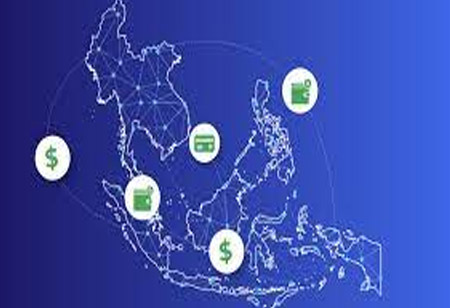THANK YOU FOR SUBSCRIBING
Key Payment Trends in E-Commerce in Southeast Asia
Cards are the preferred payment method for online purchases in Indonesia (34 percent of online purchases), with local cards accounting for the majority of transactions.

By
Apac CIOOutlook | Tuesday, April 06, 2021
Stay ahead of the industry with exclusive feature stories on the top companies, expert insights and the latest news delivered straight to your inbox. Subscribe today.
Cards are the preferred payment method for online purchases in Indonesia (34 percent of online purchases), with local cards accounting for the majority of transactions. Card payments are followed by bank transfers (29 percent) and e-wallets (17 percent).
FREMONT, CA: Despite the pandemic, Southeast Asian economies performed admirably in 2020. The Asian Development Bank (ADB) forecasts a 3.8 percent contraction for the region in 2020, a low figure when compared to the eurozone's 7.9 percent and Britain's 10.1 percent.
Southeast Asia's digital economy, in particular, accelerated last year, surpassing US$100 billion thanks to a thriving e-commerce sector. According to the economy, SEA Report 2020, which was released in November, 2020 saw the addition of 40 million new online customers, bringing the region's total number of Internet users to 400 million. According to projections, the region's digital economy will surpass $300 billion by 2025.
Indonesians Card Payments
The pandemic has accelerated the growth of online shopping in Indonesia, particularly in the areas of healthcare and grocery shopping. Online sales of products such as disinfectants and vitamins surged by 1,000 percent or more, and online grocery shopping is expected to increase by 400 percent by 2020.
Cards are the preferred payment method for online purchases in Indonesia (34 percent of online purchases), with local cards accounting for the majority of transactions. Card payments are followed by bank transfers (29 percent) and e-wallets (17 percent).
According to the report, bank transfer apps are currently the most popular payment option for online purchases, accounting for nearly half (46 percent) of Malaysians' online purchases. It is followed by credit cards (32 percent) of the respondents and cash (11 percent).
Boost, a lifestyle e-wallet, GrabPay by Grab, Touch n Go, a digital wallet and online payment platform, as well as Financial Process Exchange (FPX), a bank-transfer method, are all popular local payment methods in Malaysia.
Cash Remains Dominant in The Philippines
E-commerce volume in the Philippines increased by 376 percent in H1 2020, and evidence shows that brick-and-mortar businesses are rapidly responding to changing customer behavior, with the number of registered online businesses increasing by a factor of 40.
Despite rapid digitalization, habits are difficult to break, and consumers tend to pay for online purchases with cash. Cash is used in 37 percent of online purchases, followed by bank transfers at 29 percent and credit cards at 22 percent.
Dragonpay, an online payment platform that allows merchants to accept payments through non-traditional methods such as cash or checks at physical payment counters, ATMs, as well as mobile wallets, is a popular payment method in the Philippines. Another popular payment method is the e-wallet GCash, as well as PayMaya, a mobile banking app.





